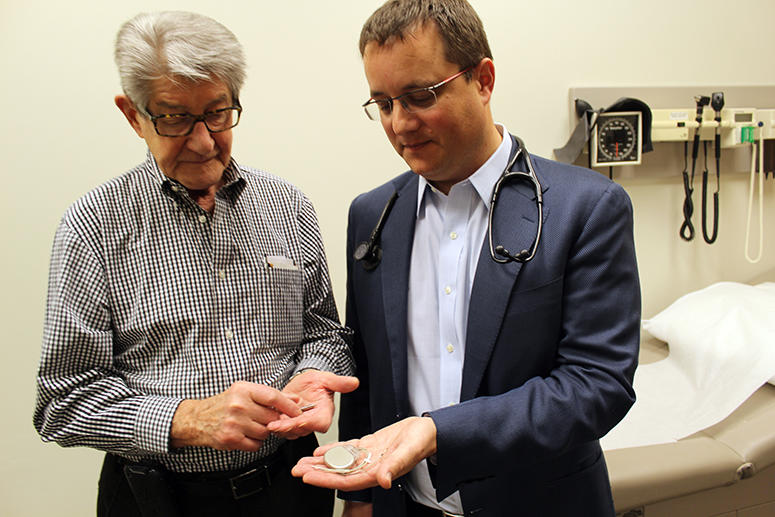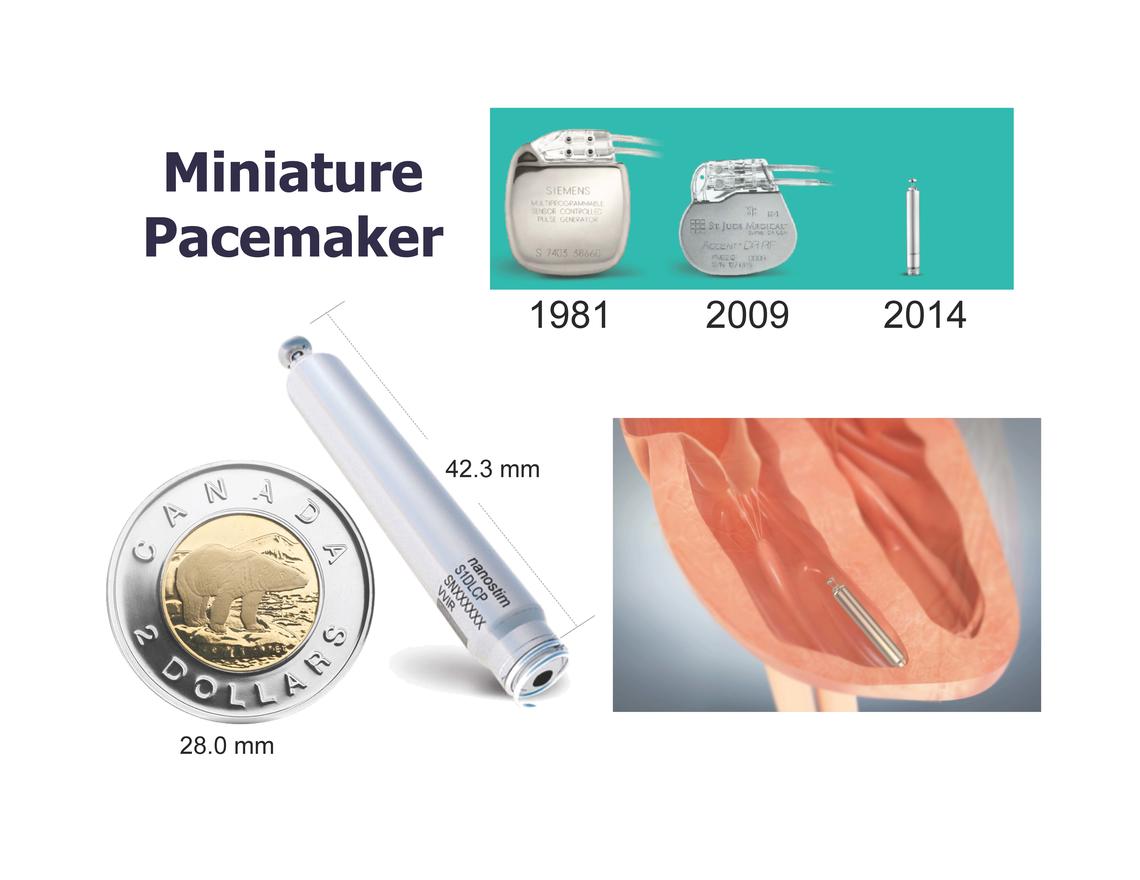Aug. 31, 2015
Study shows miniature pacemaker is safe alternative for heart patients

From left, Victor Bohonos, heart patient who had the small pacemaker implanted and Dr. Derek Exner.
A new study shows that a miniature pacemaker, also known as a leadless pacemaker, is a safe and effective alternative for patients needing this device. At about an inch long, the Nanostim leadless pacemaker is only a fraction of the size of a traditional pacemaker.
The study was led by Dr. Vivek Y. Reddy from New York’s Mount Sinai Hospital, with Dr. Derek Exner from the University of Calgary leading the Canadian and Australian teams. The study was published in the online version of the New England Journal of Medicine on Aug. 30, and presented at the European Society of Cardiology Congress 2015 in London, England. Read the full study.
More than 250,000 Canadians are living with pacemakers. They provide heartbeats and help regulate heart rhythm, extending life and improving a patient's quality of life.

The leadless pacemaker is inserted through a small incision in the groin and guided to the heart.
Smaller pacemaker is more efficient
“The leadless pacemaker is a fully self-contained unit that is much more energy efficient than conventional pacemakers,” says Exner, a heart rhythm specialist and researcher at the Cumming School of Medicine, and member of the Libin Cardiovascular Institute of Alberta. “Reducing the size of pacemakers can have a tremendous benefit to a patient’s quality of life.”
The device, which is shaped like the tip of a pen, is inserted through a small incision in the groin and guided by X-rays into the right lower heart chamber, a procedure that in its entirety, takes less than an hour. The small pacemaker is expected to last an average of 15 years. Patients who qualify for a traditional pacemaker, and who are being treated at one of the study sites, are offered this new technology as part of the ongoing study.
'Out of sight, out of mind'
“Patients have a faster recovery with this new device — one week compared to four — and there are fewer technological problems because it is a single, integrated unit,” says Exner. Along with his colleague Dr. Vikas Kuriachan, cardiac electrophysiologist and Libin Cardiovascular Institute of Alberta member, he performed the implants at the Foothills Medical Centre.
“For the 28 patients who have received it in Calgary, it’s very much out of sight, out of mind," says Exner. "They have the comfort of knowing it’s there, but don’t see it or experience any discomfort.”
More than 600 patients have been enrolled from 54 centers worldwide, with Canadian sites including Calgary, Vancouver, Montreal and Toronto.
The study will be available in the Sept. 17 print edition of the New England Journal of Medicine. The study was funded by St. Jude Medical, the pacemaker's manufacturer.
